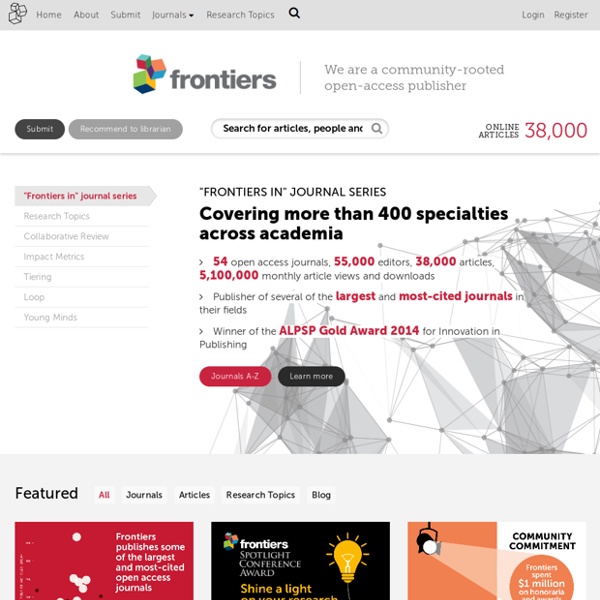



HippoCampus - Homework and Study Help - Free help with your algebra, biology, environmental science, American government, US history, physics and religion homework Altered auditory and multisensory temporal processing in autism spectrum disorders Leslie D. Kwakye1,2, Jennifer H. Foss-Feig3, Carissa J. Cascio2,3,4,5, Wendy L. 1 Neuroscience Graduate Program, Vanderbilt University, Nashville, TN, USA2 Vanderbilt Brain Institute, Vanderbilt University, Nashville, TN, USA3 Department of Psychology and Human Development, Vanderbilt University, Nashville, TN, USA4 Vanderbilt Kennedy Center for Research on Human Development, Vanderbilt University, Nashville, TN, USA5 Department of Psychiatry, Vanderbilt University, Nashville, TN, USA6 Department of Psychology, University of Washington, Seattle, WA, USA7 Department of Hearing and Speech Sciences, Vanderbilt University, Nashville, TN, USA8 Department of Psychology, Vanderbilt University, Nashville, TN, USA Autism spectrum disorders (ASD) are characterized by deficits in social reciprocity and communication, as well as by repetitive behaviors and restricted interests. Keywords: autism, multisensory, temporal binding, audiovisual, sensory processing, cross-modal integration
What We Offer - In your eyes only: deficits in executive functioning after frontal TMS reflect in eye movements Mathias Lüthi1,2, Katharina Henke2,3, Klemens Gutbrod1,2, Thomas Nyffeler1,2,4, Silvia Chaves1,2 and René M. 1Perception and Eye Movement Laboratory, Department of Neurology and Clinical Research, University Hospital Bern Inselspital, Bern, Switzerland2Center for Cognition, Learning, and Memory, University of Bern, Bern, Switzerland3Division of Experimental Psychology and Neuropsychology, Department of Psychology, University of Bern, Bern, Switzerland4Center of Neurology and Neurorehabilitation, Luzerner Kantonsspital, Luzern, Switzerland This study investigated the roles of the right and left dorsolateral prefrontal (rDLPFC, lDLPFC) and the medial frontal cortex (MFC) in executive functioning using a theta burst transcranial magnetic stimulation (TMS) approach. Keywords: eye movements, executive functions, theta burst TMS, dorsolateral prefrontal cortex, medial frontal cortex Received: 21 August 2013; Accepted: 06 January 2014; Published online: 27 January 2014. *Correspondence: René M.
16 OER Sites Every Educator Should Know -- Campus Technology Open Educational Resources | Feature 16 OER Sites Every Educator Should Know By Dian Schaffhauser07/02/14 Open educational resources not only save students from triple-digit (or more!) 1) College Open Textbooks This site lists open textbooks organized by subject area, many of which have been peer reviewed for their suitability at community colleges. 2) Learningpod Pegged as the "largest library of free, online practice questions in the world, this Kaplan division teamed up with OpenStax to create questions sets specifically for its open textbooks. 3) Lumen Learning This OER-focused company provides open courses with "zero textbook cost." 4) MERLOT II The California State University System's collection of slightly more than 45,000 resources is rated, peer-reviewed and tallied by how many "personal collections" each resides in. 7) Open Course Library Managed by the Washington State Board for Community and Technical Colleges, this content is organized by course. By Dian Schaffhauser07/02/14
Why the Diagnosis of Attention Deficit Hyperactivity Disorder Matters 1Child and Adolescent Psychiatry Division, Department of Psychiatry, University of Iowa Carver College of Medicine, Iowa City, IA, USA 2Neuroscience Program, Pappajohn Biomedical Institute, University of Iowa, Iowa City, IA, USA Background: Attention Deficit Hyperactivity disorder (ADHD) is one of the most common and challenging childhood neurobehavioral disorders. ADHD is known to negatively impact children, their families, and their community. About one-third to one-half of patients with ADHD will have persistent symptoms into adulthood. The prevalence in the United States is estimated at 5–11%, representing 6.4 million children nationwide. Objectives: We examined factors associated with making and receiving the diagnosis of ADHD. Methods: We reviewed scientific articles looking for factors that impact the identification and diagnosis of ADHD and articles that demonstrate naturalistic outcomes of diagnosis and treatment. Copyright: © 2015 Hamed, Kauer and Stevens.
5 Must-Have Google Search Tips for Students Most of us begin any simple quest for knowledge with a Google search. So it makes sense that more serious searches might start there, too. But is Google OK for formal research? Essential Tips for Google Research 1. Normally, Google will take a look at the set of words you type in, then try to find matches based on those words -- not necessarily in the order you type them. Example: Say you want to know who wrote something you'd like to cite: You'll get much better results for the citation if you put it in quotation marks and look for an exact match. Another use case: Found a good quote in the novel you're reading for class? Bonus: You can also use this as a tool for fact-checking. 2. By typing “OR” (in capital letters) between search terms, you're telling Google to look for matches to either term. Example: This can be helpful when you're searching for something that varying sources might describe differently. 3. Example: This comes in handy when your search query has a double meaning. 4.
Cognitive Representation of Human Action: Theory, Applications, and Perspectives Introduction Motor activities within particular environmental conditions are central dimensions of biological organism since millions of years. Important stages in evolution are mainly based on the establishment of new functional links between the motor system, related memory structures, and the perception of biological systems. Furthermore, motor actions – such as dance or sports – have always been an important element in all human cultures. Stated in a more dramatic language: “from the motor chauvinist’s point of view the entire purpose of the human brain is to produce movement … [and] all sensory and cognitive processes may be viewed as inputs that determine future motor outputs” [Ref. (1), p. 487]. For example, research in motor control contributes at exploring the principles underlying elite performance of professional athletes and musicians and devising training appropriately (2–5). Cognitive Representation of Action: A Theoretical Framework Figure 1. Figure 2. Author Contributions